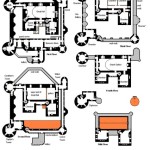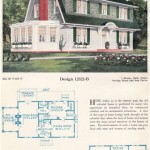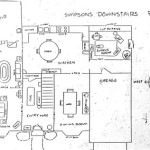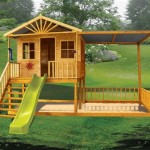DIY Greenhouse Planters: Extend Your Growing Season and Boost Plant Success
Indulging in the joys of gardening can be a fulfilling experience, but the vagaries of weather often limit the growing season. However, with the ingenuity of DIY greenhouse planters, gardeners can create controlled environments that extend the growing season and enhance plant health. These structures, often crafted from readily available materials, provide warmth, protection, and an ideal microclimate for delicate seedlings and plants that thrive in specific conditions.
Building a DIY greenhouse planter offers a practical and rewarding way to cultivate a flourishing garden year-round. Beyond the practical benefits, these structures add a touch of charm and personality to the landscape, making them an aesthetically pleasing addition to any outdoor space. The possibilities for customization are boundless, allowing gardeners to tailor the design and function of their greenhouse planters to specific needs and preferences.
Benefits of DIY Greenhouse Planters
DIY greenhouse planters offer a multitude of benefits for both seasoned and novice gardeners. Here are some key advantages:
1. Extended Growing Season
One of the primary advantages of greenhouse planters is the ability to extend the growing season. By providing a sheltered and warmer environment, these structures allow gardeners to start seeds earlier in the spring and continue growing plants later into the fall. This extended growing season translates to a longer period for enjoying fresh produce and beautiful blooms.
2. Enhanced Plant Health
Greenhouse planters offer a controlled environment that promotes optimal plant health. The protection from harsh weather conditions, such as strong winds, heavy rain, and extreme temperatures, safeguards plants from damage and stress. The controlled environment also allows gardeners to regulate factors like humidity and airflow, creating ideal growing conditions that enhance plant vigor and yield.
3. Cost-Effectiveness
DIY greenhouse planters are often a cost-effective alternative to purchasing pre-made structures. By utilizing readily available materials like recycled plastic containers, wooden pallets, or even old window frames, gardeners can create functioning greenhouses for a fraction of the price. This affordability makes greenhouse gardening accessible to a wider range of individuals, regardless of budget constraints.
Types of DIY Greenhouse Planters
The world of DIY greenhouse planters is diverse, offering a range of options tailored to different space constraints, budgets, and preferences.
1. Plastic Container Greenhouses
Plastic containers, such as large storage tubs or even discarded water bottles, are readily available and inexpensive materials for creating simple greenhouses. These containers can be easily modified by cutting out windows or doors for ventilation and access. Adding a clear plastic cover, such as a sheet of polyethylene film, creates a mini-greenhouse that traps warmth and provides protection from the elements.
2. Pallet Greenhouses
Wooden pallets, often discarded by businesses, can be transformed into sturdy and attractive greenhouse planters. The slats of the pallet can be used to create a framework for a freestanding or wall-mounted greenhouse. Using a combination of wood, wire mesh, and plastic sheeting, gardeners can construct a functional and aesthetically pleasing greenhouse planter.
3. Window Frame Greenhouses
Recycled window frames offer a unique and charming option for creating a greenhouse planter. The glass panels provide excellent light transmission while the frame provides a sturdy structure. These greenhouses can be freestanding or attached to walls or fences, adding a touch of rustic elegance to any outdoor space.
DIY Greenhouse Planter Construction
Constructing a DIY greenhouse planter requires a combination of planning, ingenuity, and basic construction skills.
1. Planning and Materials
Before embarking on the construction process, gardeners should carefully plan the size, shape, and materials of their greenhouse planter. Consider the available space, the desired climate, and the types of plants that will be grown. Gather the necessary materials, including tools, building materials, and fasteners.
2. Construction Steps
The specific steps involved in constructing a DIY greenhouse planter will vary depending on the chosen design and materials. However, the general process typically involves creating a frame, attaching a covering material, and providing ventilation.
3. Placement and Maintenance
Once the greenhouse planter is built, it is important to choose an appropriate location. Consider factors like sunlight exposure, drainage, and access for watering and maintenance. Regular upkeep is crucial for maintaining the functionality of the greenhouse planter, including cleaning, repairing any damage, and providing adequate ventilation.

Soil Sink Potting Bench Garden Greenhouse Plan Design Ideas

10 Greenhouse Planters To Buy Or Diy Poppytalk Archive

Soil Sink Potting Bench Garden Greenhouse Plan Design Ideas

How To Build A Greenhouse Planter Box Plans Ideas

28 Diy Backyard Greenhouses And Simple Greenhouse

Diy Greenhouse Boxes By Nancy Cold Frame Backyard Projects Garden Planning

Raised Garden Bed Designs Growing Spaces Greenhouses

10 Diy Greenhouse Projects Garden Design Cold Frame
:max_bytes(150000):strip_icc()/01OSUonetimeuse-fd73f7e1cce24c34b09c1ee8f79e75c7.jpeg?strip=all)
Diy Build A Raised Bed Greenhouse

40 Best Diy Greenhouses With Easy Tutorials A Piece Of Rainbow








